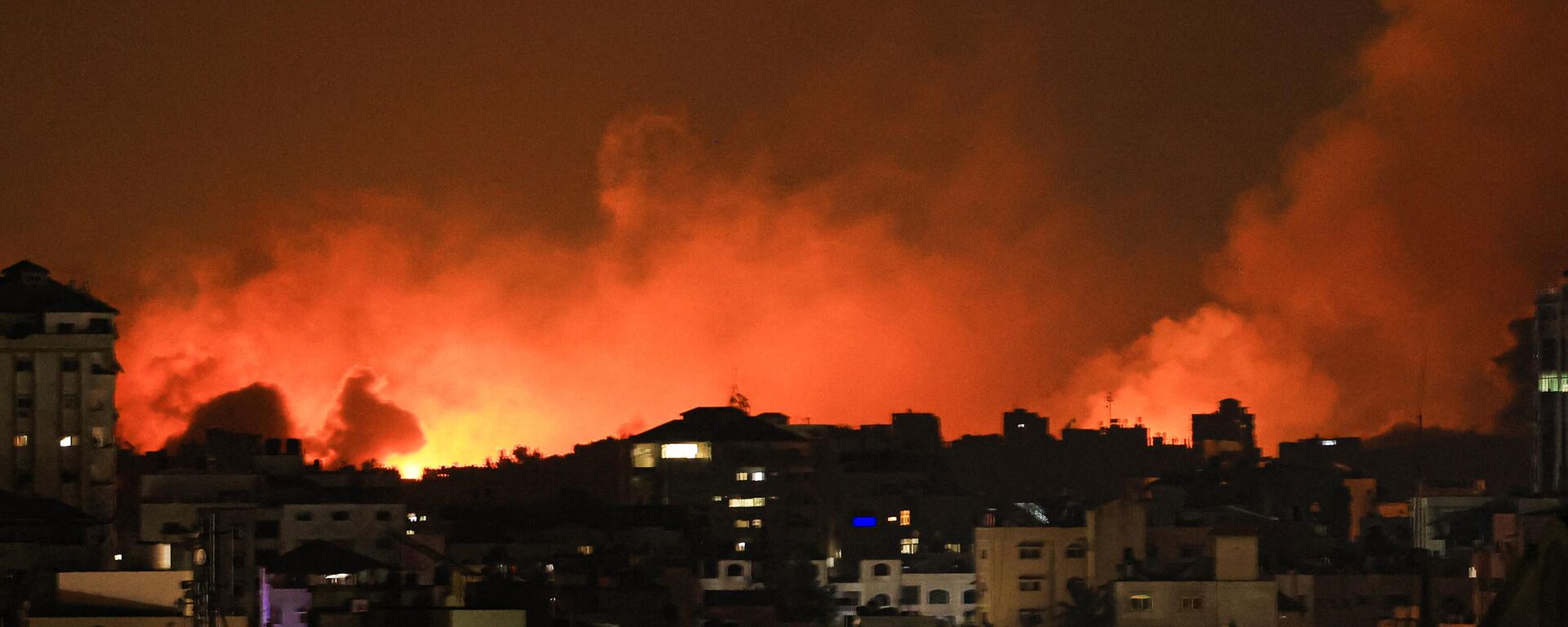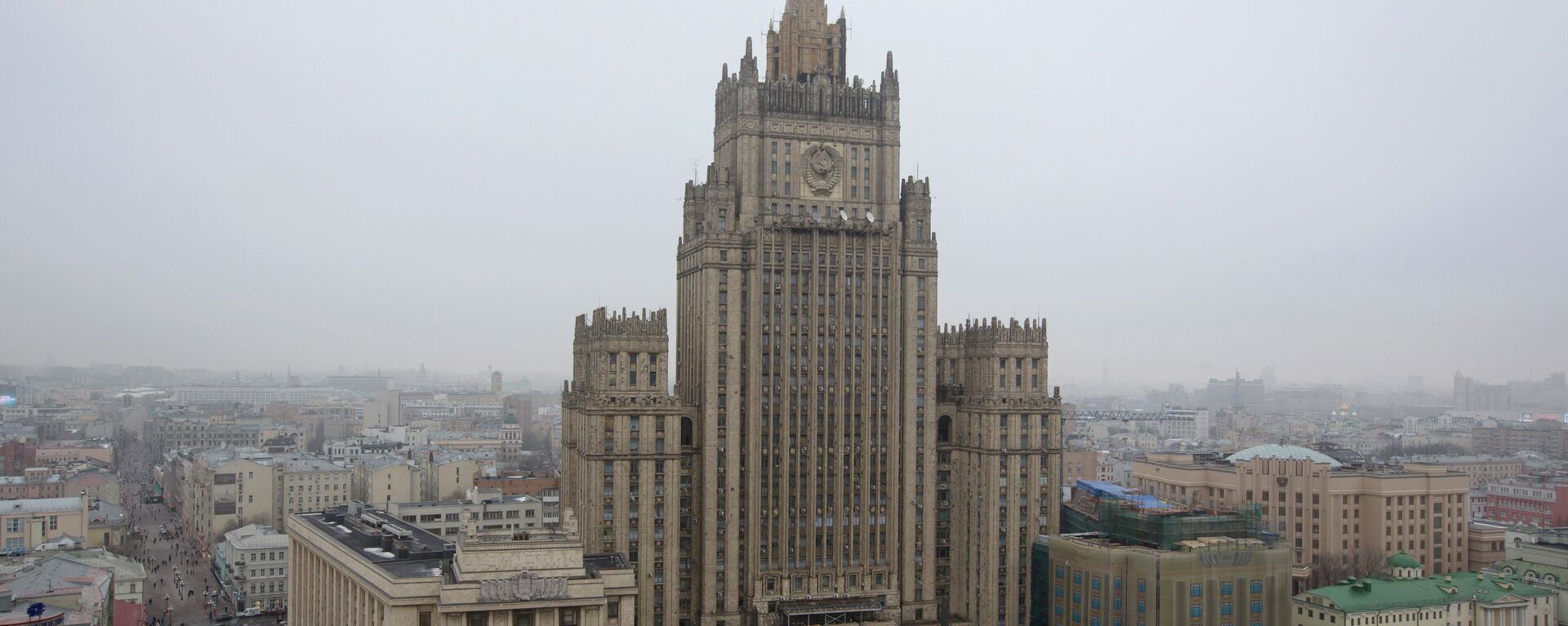https://sputnikglobe.com/20231010/roots-of-israel-hamas-conflict-1114064324.html
Roots of Palestinian-Israeli Conflict
Roots of Palestinian-Israeli Conflict
Sputnik International
On November 29, 1947, the UN General Assembly voted to establish two states – the Jewish and Arab – on the West Bank of the Jordan River, with Jerusalem retaining its status as an international zone.
2023-10-10T13:29+0000
2023-10-10T13:29+0000
2024-01-30T10:27+0000
israel
gaza strip
palestine
hamas
fatah
un general assembly
yasser arafat
palestinians
sputnik explains
https://cdn1.img.sputnikglobe.com/images/sharing/article/eng/1114064324.jpg?1706610460
On May 4, 1948, Israel declared independence. Immediately thereafter, the Arab countries - Egypt, Syria, Jordan, Lebanon, and Iraq - started a war against the newly established state.During the Six Day War of 1967, Israel occupied the Gaza Strip and the West Bank of the Jordan River, including East Jerusalem. The Jewish population began cultivating Palestinian land, resulting in a mass displacement of Palestinians.After the first Intifada (the Palestinian uprising against Israeli authority in the occupied territories), the Declaration of Principles for the Provisional Self-Government of Palestine was signed. The document established a transitional period of five years, which was to begin with the relocation of Israeli troops from the Gaza Strip and Jericho (West Bank). Then, the permanent status of the Palestinian territories was to be determined.In 1996, Palestine held the first election. Yasser Arafat was elected as the president of the Palestinian National Authority. In 2002, after the second intifada, the United States, the European Union, Russia, and the United Nations proposed a peace plan called the Road Map. It stated the resumption of negotiations, conflict resolution, and the establishment of an independent Palestinian state.In 2005, Israel completely withdrew its troops from the Gaza Strip unilaterally and without any political agreement. On January 25, 2006, a second election was held. Hamas swept to victory, gaining 80 seats, while Fatah took 43 in the Palestinian Legislative Council. In June 2007, Fatah (which no longer ruled according to the results of the 2006 elections) and Hamas fought each other in a military conflict in the Gaza Strip. The confrontation resulted in Hamas gaining full control of the Gaza Strip, after forcing most of the Fatah activists out of the Strip.The situation escalated dramatically again when US President Donald Trump announced in 2018 that he would recognize Jerusalem as Israel’s capital and move the American embassy there. On November 29, 2012, Palestine was granted observer state status at the UN, which many see as a de facto recognition of Palestinian statehood by the international community.Since 2008, Israel has been retaliating to artillery strikes on its territory by conducting military operations against Hamas infrastructure in the Gaza Strip. The last one occurred in May 2023. Russia urges Israel and Palestine to stop hostilities and return to the negotiating table.
https://sputnikglobe.com/20231009/who-do-middle-eastern-countries-support-in--israel-hamas-conflict-1114044403.html
https://sputnikglobe.com/20231007/russia-urges-israel-palestine-to-cease-fire-return-to-negotiations---foreign-ministry-1114003454.html
https://sputnikglobe.com/20231010/hamas-attacks-might-be-attempt-to-disrupt-saudi-israel-normalization-talks-says-ex-us-official-1114054166.html
israel
gaza strip
palestine
Sputnik International
feedback@sputniknews.com
+74956456601
MIA „Rossiya Segodnya“
2023
Sputnik International
feedback@sputniknews.com
+74956456601
MIA „Rossiya Segodnya“
News
en_EN
Sputnik International
feedback@sputniknews.com
+74956456601
MIA „Rossiya Segodnya“
Sputnik International
feedback@sputniknews.com
+74956456601
MIA „Rossiya Segodnya“
israeli-hamas conflict, israel, hamas, palestine, plo, gaza strip, west bank
israeli-hamas conflict, israel, hamas, palestine, plo, gaza strip, west bank
Roots of Palestinian-Israeli Conflict
13:29 GMT 10.10.2023 (Updated: 10:27 GMT 30.01.2024) On November 29, 1947, the UN General Assembly voted to establish two states – a Jewish one and an Arab one – on the West Bank of the Jordan River, with Jerusalem retaining its status as an international zone.
On May 4, 1948, Israel declared independence. Immediately thereafter, the Arab countries - Egypt, Syria, Jordan, Lebanon, and Iraq - started a war against the newly established state.
During the Six Day War of 1967, Israel occupied the
Gaza Strip and the West Bank of the Jordan River, including East Jerusalem. The Jewish population began cultivating Palestinian land, resulting in a mass displacement of Palestinians.

9 October 2023, 17:07 GMT
After the first Intifada (the Palestinian uprising against Israeli authority in the occupied territories), the Declaration of Principles for the Provisional Self-Government of Palestine was signed. The document established a transitional period of five years, which was to begin with the relocation of Israeli troops from the Gaza Strip and Jericho (West Bank). Then, the permanent status of the Palestinian territories was to be determined.
In 1996, Palestine held the first election. Yasser Arafat was elected as the president of the Palestinian National Authority. In 2002, after the second intifada, the United States, the European Union, Russia, and the United Nations proposed a peace plan called the Road Map. It stated the resumption of negotiations, conflict resolution, and the establishment of an independent Palestinian state.

7 October 2023, 11:26 GMT
In 2005, Israel completely withdrew its troops from the Gaza Strip unilaterally and without any political agreement. On January 25, 2006, a second election was held.
Hamas swept to victory, gaining 80 seats, while Fatah took 43 in the Palestinian Legislative Council. In June 2007, Fatah (which no longer ruled according to the results of the 2006 elections) and Hamas fought each other in a military conflict in the Gaza Strip. The confrontation resulted in Hamas gaining full control of the Gaza Strip, after forcing most of the Fatah activists out of the Strip.
The situation escalated dramatically again when US President Donald Trump announced in 2018 that he would recognize Jerusalem as Israel’s capital and move the American embassy there. On November 29, 2012, Palestine was granted observer state status at the UN, which many see as a de facto recognition of Palestinian statehood by the international community.

10 October 2023, 03:19 GMT
Since 2008, Israel has been retaliating to artillery strikes on its territory by conducting military operations against Hamas infrastructure in the Gaza Strip. The last one occurred in May 2023. Russia urges Israel and Palestine to stop hostilities and return to the negotiating table.



